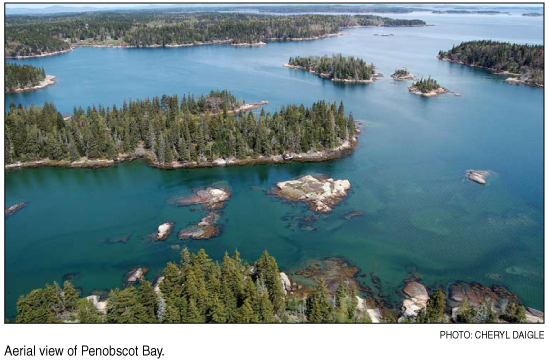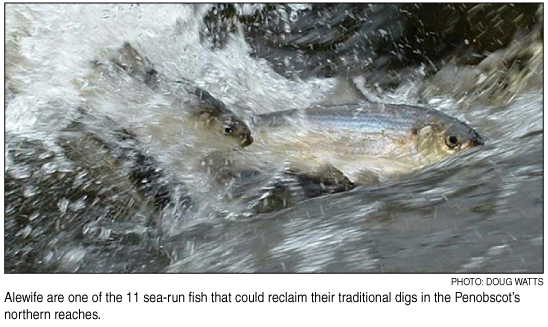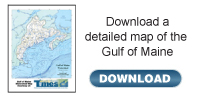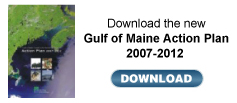*Web only content*
Envisioning success
By Elizabeth McGowan
Related story: Rejuvenating the Penobscot to make way for salmon, other sea-run fish
Call them persnickety, but native fish just can’t flourish when their watery worlds are blocked and soiled.
The Penobscot River Restoration Trust’s ambitious dam-removal project, however, could alter that dynamic dramatically. Fish biologists agree it’s reasonable to expect the Penobscot’s populations of three species—alewives, shad and salmon—to eventually swell from near zero to at least 4 million alewives, 1.5 million shad and 10,000 to 12,000 salmon.
“We know the alewives will respond quickly,” said Maine-based fishery biologist Rory Saunders of the National Oceanic and Atmospheric Administration (NOAA).

While fecund, adaptable alewives are at the speedy end of the restoration scale, salmon and shad are just the opposite because they’re selective about their spawning sites, diet and habitat. Eels are the only species that return to the ocean to spawn.
“It’s not an overnight thing,” Massachusetts-based NOAA fisheries specialist John Catena said about boosting numbers of all 11 targeted species. “Our yardstick is, 10 to 20 years from now, if we’re not seeing measurable increases in these populations of fish, we’re going to be pretty disappointed.”
“We don’t have specific numeric targets today,” he continued. “But we’re going to get there.”
Fishing guide Bob Croce is eager for the piscine puzzle to be solved. Soon he and Maine colleagues hope to be aiding the Penobscot River Restoration Trust with fish surveys along the Penobscot and its tributaries.
“Maine people have always been intimately involved with their rivers,” Croce said. “And it’s not just fish we’re talking about. Rivers were for recreation and economic vitality. We lost a vital community resource. Instead of turning our back on rivers, now we have a chance to recreate a culture that was lost.”

Before fish supplies dwindled so drastically, an annual springtime tradition called for Maine to deliver an Atlantic salmon to the White House. The last recipient was the first President George Bush in 1992.
If the salmon supply rebounds sufficiently, Croce will certainly consider plying the Penobscot for this sublime cold-water fish once again.
“There’s still that whole aura, that whole mystique, that whole aesthetic experience of fishing for Atlantic salmon,” said Croce, a Massachusetts native who himself migrated to Maine four decades ago.
Who knows? Maybe in the not-too-distant future he will be the fortunate one who plucks a prized salmon from the teeming river, packs it in ice and delivers it to 1600 Pennsylvania Ave.
|








